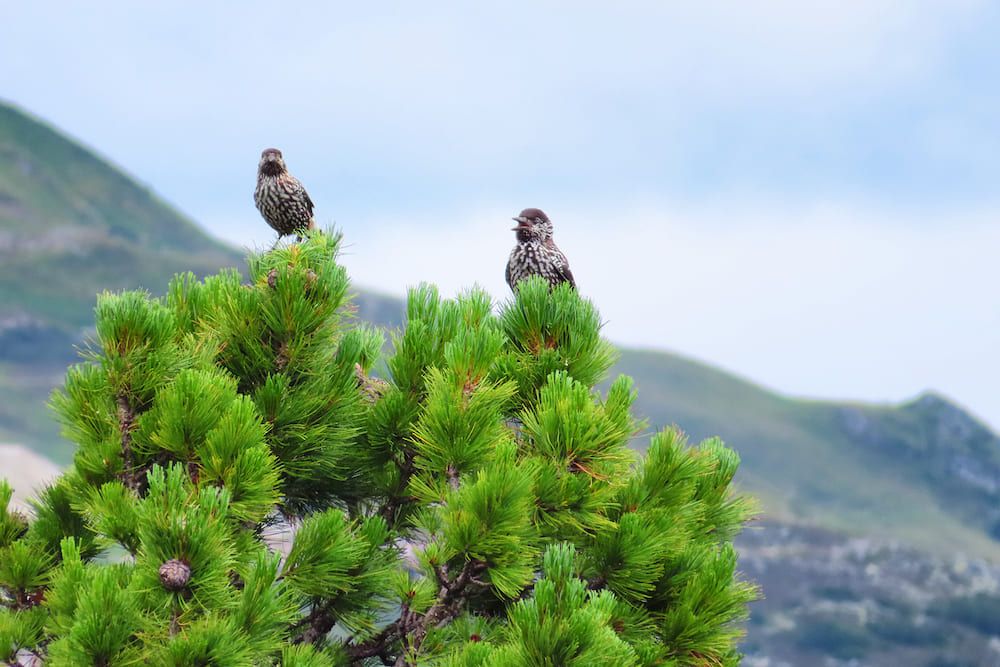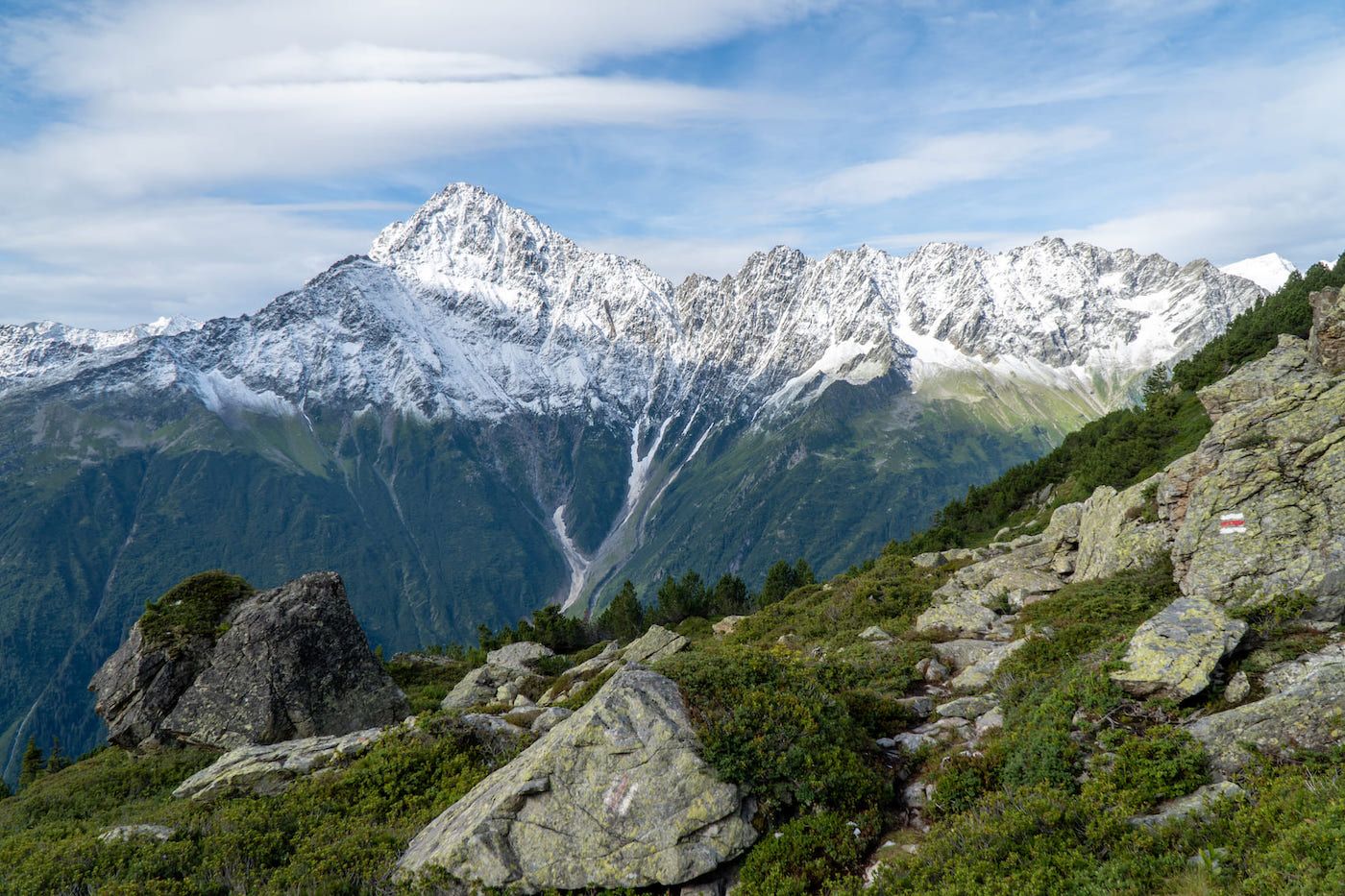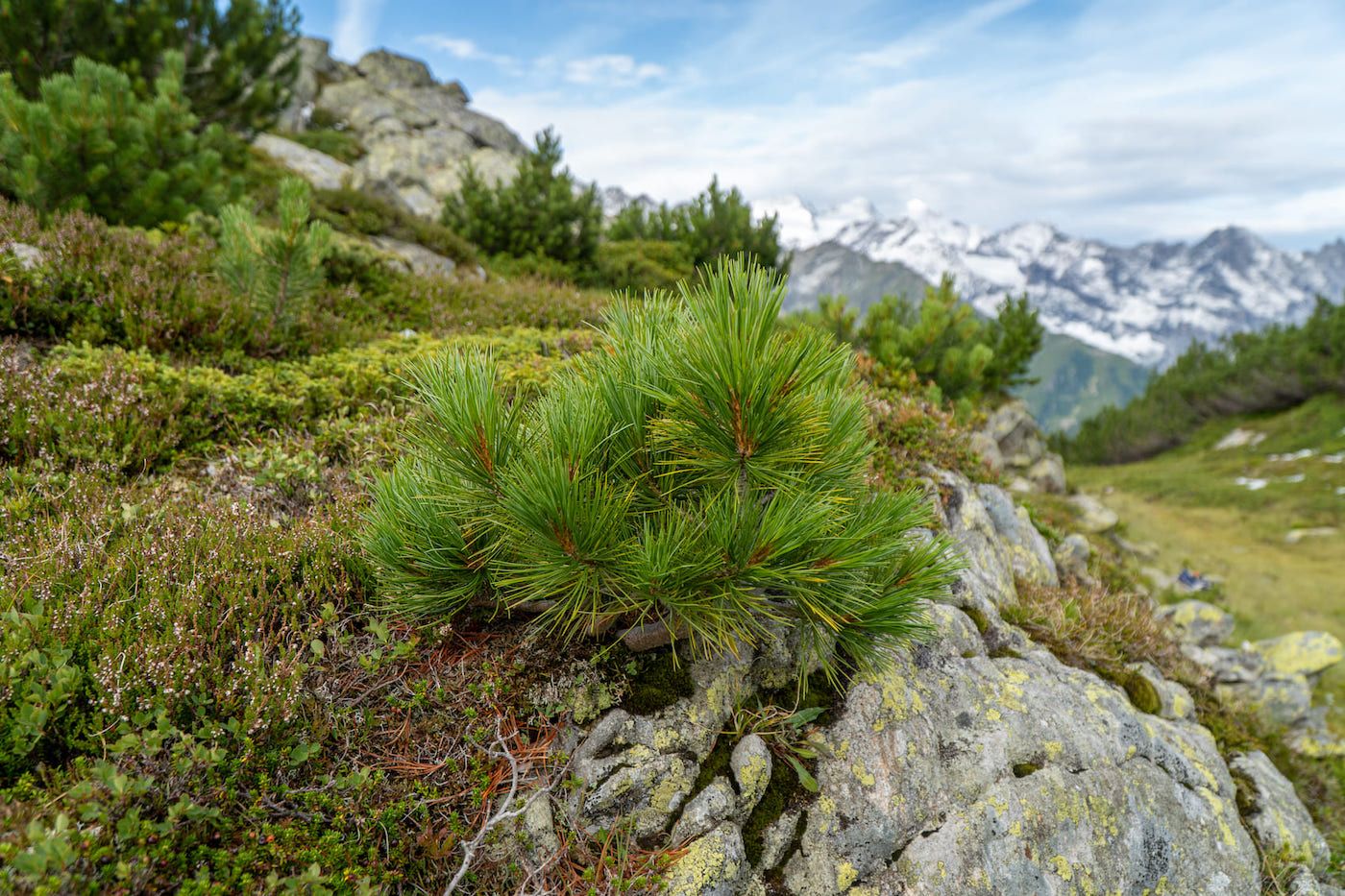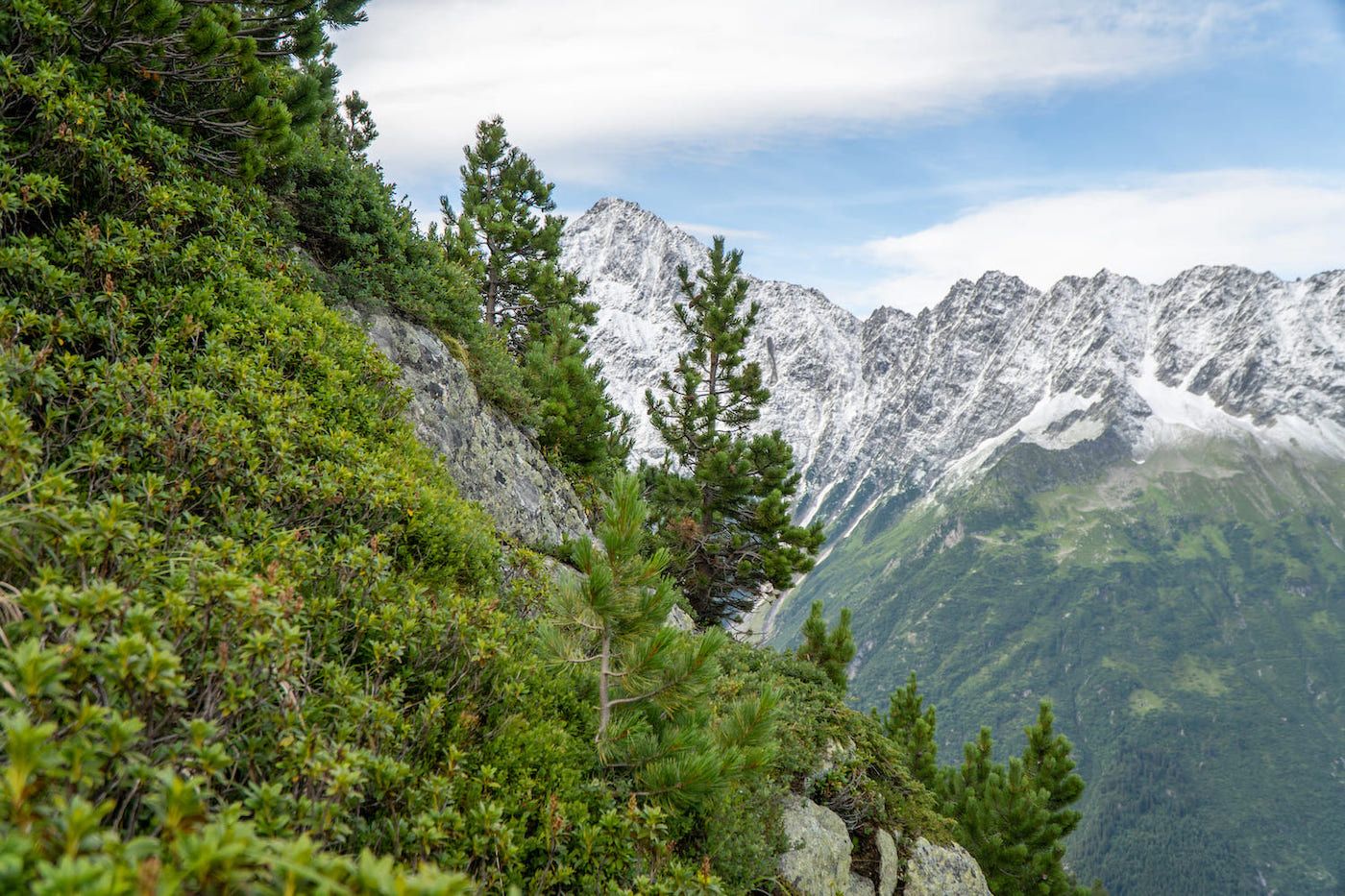On the heights of the Swiss Alps, between the municipalities of Guttannen and Innertkirchen, Reforest'Action is implementing an Assisted Natural Regeneration project in collaboration with local forestry stakeholders. The primary aim of this initiative is to revitalize and diversify Swiss stone pine forests, which are dominated by the iconic Alpine tree, also known as Pinus cembra or Arolla pine. With the aim of increasing their resilience to the threats raised by climate change, a series of rejuvenation measures will be implemented over a five-year period. By following a tripartite scientific protocol based on the selection of forest stations, the origin of pine seeds and the sowing method, it will be possible to foster the effective and sustainable regeneration of stone pine stands. This project not only seeks to preserve a symbol of high-altitude biodiversity, but also to establish a soft silvicultural management model that can be replicated in other areas facing similar problems.

Arolla or Swiss stone pine: an endangered emblematic species
The king of subalpine ecosystems
In the heart of the Swiss Alps, Canton of Bern, Reforest'Action is funding the regeneration of a species that is emblematic of the Alpine forest ecosystem. The Arolla pine, also known as Swiss stone pine or Pinus cembra, takes root between 1,300 and 2,600 meters above sea level, an altitude at which very few species survive. Beyond the upper limit of the forest, this tree grows at the highest altitudes in Europe. The Swiss stone pine thrives on a layer of rough humus: made up of slightly decomposing organic matter, this acid substrate is no problem for the Arolla pine, quite the contrary. With this type of soil and under ideal climatic conditions, this conifer of the Pinaceae family can survive for several hundred years, withstanding extreme sub-zero temperatures down to -40°C. Violent winds, snowfalls, lightning... As a long-lived tree, the Pinus cembra experiences many hostile weather events over its lifetime, which often endow it with an irregular, asymmetrical silhouette. The tree's outstanding physiological capabilities have earned it the reputation of being the "King of the Alps". Over the years, it has become a true symbol of the Swiss scenery, an emblem of great intangible and aesthetic value.
However, the subalpine conditions required for the Arolla pine to flourish limit its range to the central European Alps, for the most part, and to the Carpathians, in a more scattered pattern. But its rarity is also due to a particular life cycle: it takes more than 40 years for the tree to reach sexual maturity and for its female flowers to bear fruit, called "cones" or "pives", containing seeds that can be dispersed.
The Swiss stone pine also plays a major ecological role. This mountain species ensures the transition between the Alpine forest ecosystem and the treeless mountain summits. Arolla pine is almost always found mixed with larch and spruce, forming well-structured stands known as "arolières" in Swiss French. The latter are home to a great deal of plant biodiversity. In particular, they support the development of undergrowth flora, forming a carpet of heather, bilberry and ligonberry, and are home to rare flower species such as the Boreal linnet and the Alpine clematis. The open structure of these forests, interspersed with clearings, benefits many ground-feeding animals, including deer, chamois, mountain hare (a species of hare whose fur color changes with the seasons) and a wide variety of birds (spotted nutcracker, tree chaffinch, drake and music thrush, ring ouzel, tree pipit...).
A symbiosis relationship critical to the stone pine’s survival
The spotted nutcracker (Nucifraga caryocatactes) is a passerine species whose habitat corresponds to the distribution areas of the Swiss stone pine. The latter is therefore very often found where the bird nests, and their cohabitation is far from trivial: it is an excellent example of mutualism. Mutualism is a type of symbiosis between species implying that both partners derive lasting, reciprocal benefits from their association, which may even determine their survival.


The bird, with its chocolate-brown body dotted with white spots, feeds mainly on stone pine seeds, which it easily extracts from the tree's cones high up thanks to its powerful beak and ingenious technique. An Arolla cone contains over 100 large seeds, which the nutcracker is able to carry at once in its crop, a bird-specific organ that serves as a food reservoir. From late summer onwards, the bird works relentlessly to build up its winter food reserves, burying and hiding the harvested seeds in the ground, and in tree or rock crevices. The nutcracker builds up to ten thousand reserves of 10 seeds each in the course of a single season. Its exceptional memory enables it to find around 80% of them during the winter.
Conversely, stone pine seed dispersal depends almost entirely on the nutcracker's diet. The conifer seeds are in fact too heavy and firmly attached to be carried by the wind. The 20% of seeds not consumed by the bird during winter are not lost. Dispersed at high altitudes, often beyond the limits of existing stone pine forests, they germinate by the following spring, ensuring the effective spread of stone pine in Alpine regions. This is why the bird's work is essential to the rejuvenation of Arolla stands, especially in the face of climate change. As the main natural propagator of Swiss stone pines, the spotted nutcracker, which had almost disappeared in the past, has become a protected species.
Swiss stone pine threatened by climate change
In Switzerland, the surface area of Swiss stone pine forests has declined sharply over the last centuries, as a result of large-scale clearing to create alpine meadows (mountain pastures) and harvest firewood and litter. While the sale of non-timber products (which do not require the trees to be cut down) such as essential pine oil or pine liqueur is now favoured, climate change is now threatening the survival of Arolla pines in the Swiss Alps.
The coming decades will bring many challenges for the Swiss stone pine: higher temperatures, increased drought, changes in rainfall patterns, etc. Since the 1980s, these disturbances have been intensifying, gradually pushing the Arolla pine's limit of establishment towards the summits, to the benefit of other species better adapted to these new conditions. Larch and spruce, two fast-growing species, are competing strongly with stone pine and are steadily gaining altitude. The longevity of Pinus cembra has even become an obstacle to its survival, as the genes passed down to the young trees are suited to a much cooler, wetter environment. Although the Arolla pine has a great genetic adaptability, such adaptation takes time. What's more, the process of natural migration towards the heights, made possible by the spotted nutcracker, is no match for the frantic pace of climate change. This is why the Swiss National Forest Inventory warns about a regional decline in the surface area of "arolières" and the risk of local extinction of the stone pine species.

Supporting the natural regeneration of Swiss stone pine: a scientific protocol
A path to diversified, resilient stone pine forests
At an average altitude of 1,900 meters, in the municipalities of Guttannen and Innertkirchen, Reforest'Action has been conducting an Assisted Natural Regeneration (ANR) project in collaboration with local forestry stakeholders since 2022. The Natural Regeneration method, which respects the natural cycle of forests, makes it possible to enhance the value of existing trees, making them more diversified and resilient over the long term. Against a background of climate change, the objective here is to guarantee the survival of the Arolla pine in the Swiss Alps. The initiative therefore aims to preserve and adapt the stone pine forests to future climatic conditions, and to restore their status of diversified habitats ensuring the transition to the alpine stage.
The five project sites, each covering around ten hectares, currently comprise very few trees, but have been chosen for their specific characteristics (soil quality, exposure, plant competition, etc.), which are conducive to the development of the Arolla pine. For a period of five years, the enhancement of existing "arolières" will be combined with enrichments planting conducted according to a defined scientific protocol. A total of 300,000 stone pine seeds of different origins will be sown during the first year of implementation, with the aim of analyzing their growth success in subsequent years, and drawing useful conclusions. Rejuvenation will also make the Arolla forests more resistant and resilient in the face of climate change and severe competition from other coniferous trees. Meanwhile, the adoption of sustainable silvicultural management methods will promote stand growth, structural richness and the development of biodiversity. The return of birds, and in particular of the spotted nutcracker, will encourage the establishment of stone pine seedlings at higher altitudes, thus promoting its natural regeneration.

A three-variable scientific research program
The scientific dimension of the project reinforces the relevance and viability of the actions undertaken. As a priority, the project aims to scientifically determine the most favorable conditions for Swiss stone pine regeneration. By cross-referencing stationary factors and seed origin with sowing methods, it will be possible to find the keys to an effective and sustainable natural regeneration process. This is a highly challenging task, since the success of the protocol and, ultimately, of pine seedling growth, also depends on external phenomena that are difficult to predict or manage, such as climatic and meteorological conditions, plant competition and the influence of game. The research program will be carried out over the five-year duration of the project, and may be extended for a further five years if necessary.
Variable #1: the selection of forest stations
The first variable of the scientific protocol is the selection of suitable areas for sowing pine tree seedlings. According to the IGN*, a forest station is "a plot of land of varying size presenting homogeneous physical and biological conditions". These conditions include mesoclimate (climate within a restricted area), topography, soil composition and spontaneous vegetation structure. Identifying forest stations enables forest managers to make guided silvicultural management choices. In the case of our project in Switzerland, soil quality was the main factor behind the choice of five locations on which to promote stone pine regeneration and test the whole methodology. Each station therefore constitutes a different natural habitat for Arolla pine.
Each of the above-mentioned stations is then subdivided to create a mesh of "microstations". This additional subdivision reduces the experiment to the most favorable spots for sowing pine seeds. At altitude, even small differences in location can influence the success or failure of sprouting. For example, high ground as well as the vicinity of old stumps of harvested trees are ideal areas for the survival of stone pine seedlings. Between ten and fifteen microstations will be set up on each hectare, for a total of 500 experimental plots. Only one seed origin is used per microstation, so that the sequencing of trials and their success can be evaluated at a later stage.
*IGN : French National Institute for Geographic and Forestry Information
Variable #2: the origin of pine seeds
Alongside the selection of stations, the origin of pine seeds is another major component of the scientific methodology. Pinus cembra seeds from three different regions were collected on behalf of the project: in the Aare Valley, at the botanical garden of the University of Berne and in Central Eastern Alps, which extend from northern Italy to eastern Switzerland. Despite being 100% the same species, the genome of each individual tree diverges according to where it grows: this is known as genetic biodiversity. The hypothesis raised here is that the introduction of Arolla seeds originating from further south will promote the species' regeneration in a context of rising temperatures at altitude. This method, known as "assisted migration", is one strategy for adapting tree species to climate change. The impact of the genetic characteristics of the seeds on the germination and growth of Swiss stone pines will be demonstrated in a subsequent impact analysis.
Variable #3: the rejuvenation methods
The final factor to be tested, which is decisive for the successful rejuvenation of the Swiss stone pine, is the way the seeds are sown. Four sowing methods are tested for the purpose of the project, each based on different seed embedment methods. However, none of the sowing techniques chosen requires any tillage, in line with our concern to cause as little disturbance as possible to the natural environment, and in keeping with the Assisted Natural Regeneration approach. On each station, four different sowing techniques will be used:
1. Direct seeding: this is the simplest method of rejuvenation. Seeds are dispersed on the ground without any prior preparation and are spread by hand to mimic natural seed dispersal.
2. Superficial scarification and spreading: in this case, the soil is prepared before the seeds are introduced. Surface weeds, often forming a thick straw layer, are removed to enable the seeds to root more easily after spreading.
3. Deep scarification or burial: this method involves sowing seeds directly into the soil, rather than spreading them on the surface. Small, localized, shallow holes are made to deposit the pine seeds.
4. Burial and protection from animals: identical to the previous method, this last method entails protecting seedling areas by surrounding them with a fence. Pine shoots are prized by wild ungulates, which represent a threat to their survival.
For the scientific methodology to be valid, "control" microstations will be designated, on which nothing will be done. These untouched areas will act as "counterfactuals", helping to determine whether the results obtained on the test areas are indeed due to experimental bias.

Ultimately, for each forest station, the goal is to be able to select the most suitable seed origins and the most effective sowing methods, with a view to improving the recovery rate of young pines over the coming years. We expect an overall growth success rate of at least 33%. The good health of the seedlings will be monitored every year, but the concrete evaluation of the scientific results will only be possible as of the second or third year after sowing the seeds, given the slower pace of nature at this altitude.